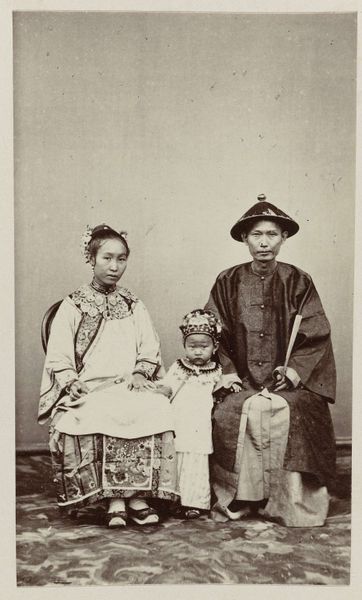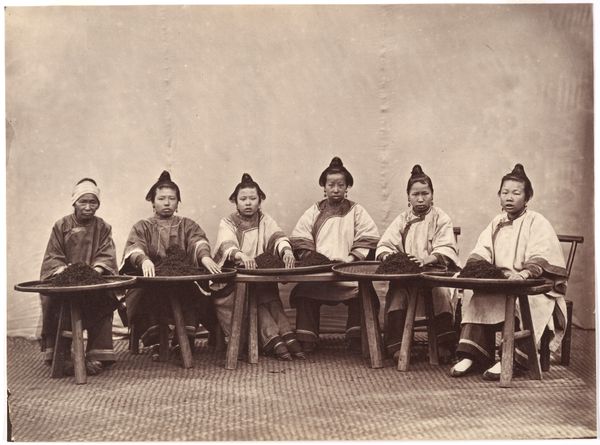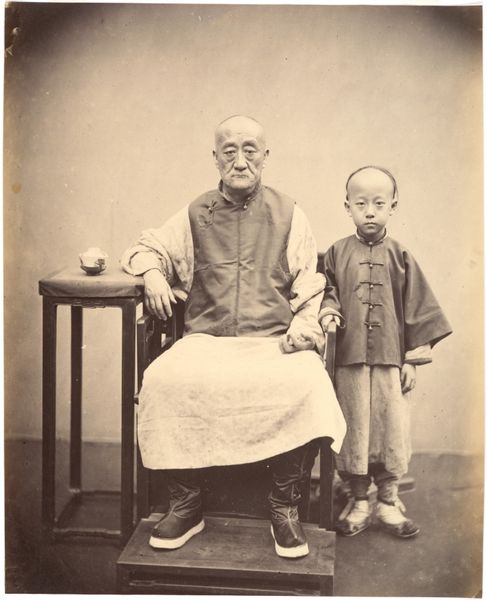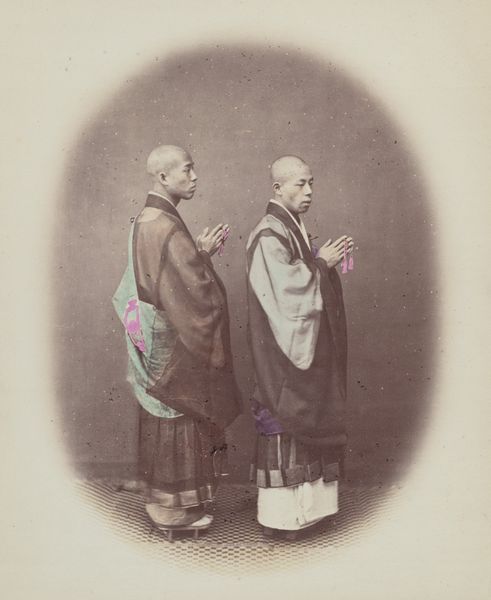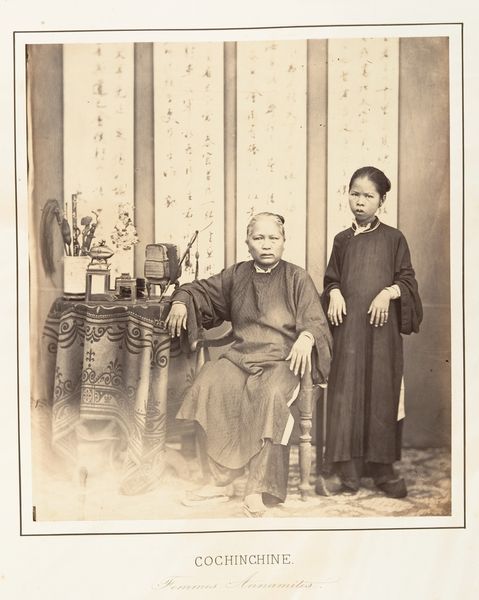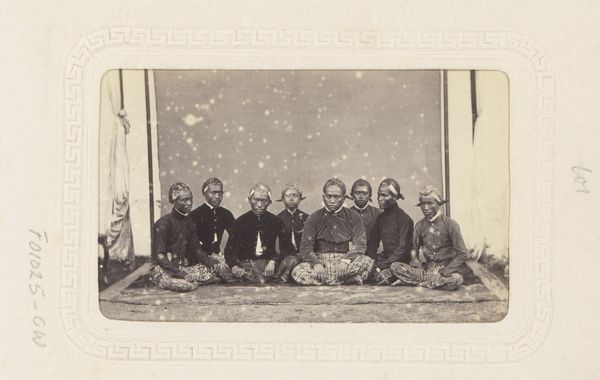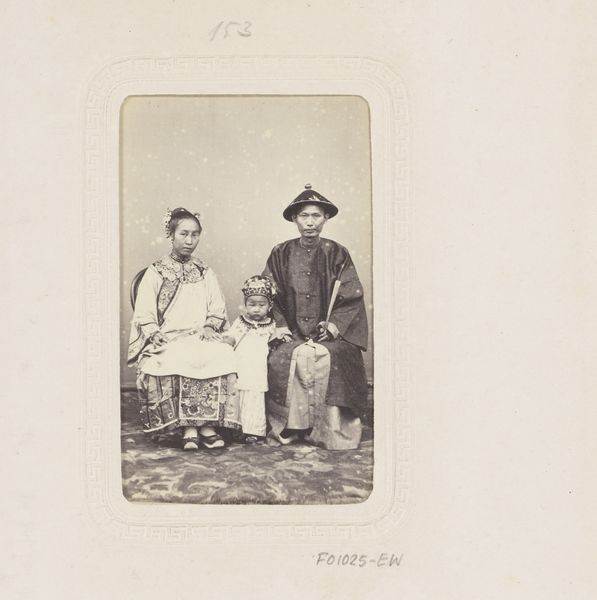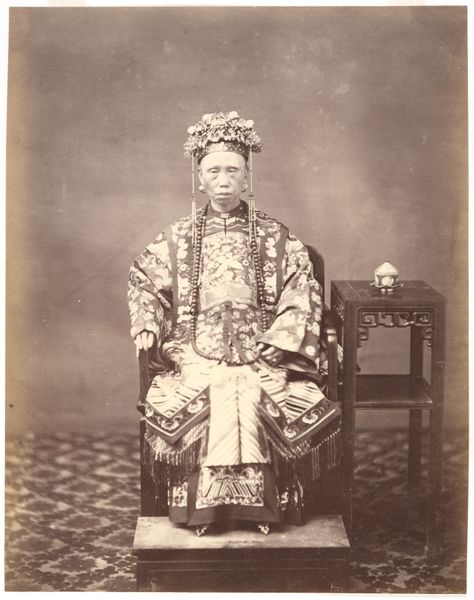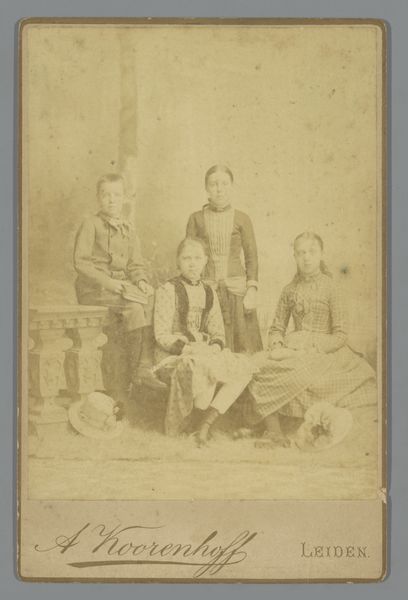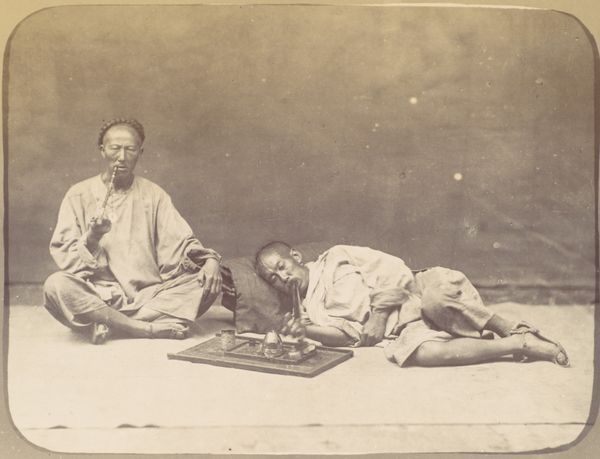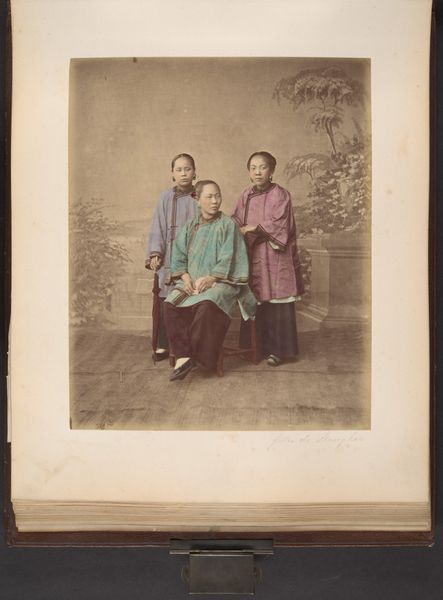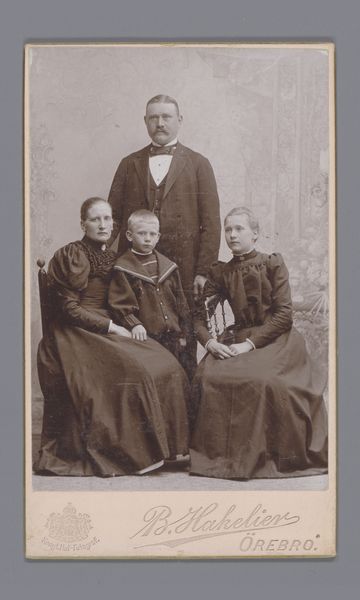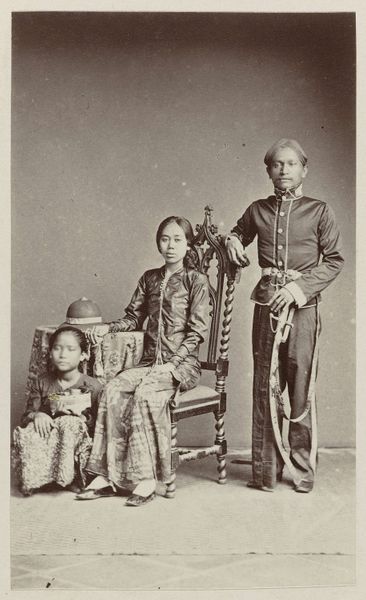
photography, albumen-print
#
portrait
#
asian-art
#
photography
#
historical photography
#
albumen-print
Dimensions: Image: 8 3/16 × 11 1/8 in. (20.8 × 28.2 cm)
Copyright: Public Domain
Editor: Here we have "Mandarin with Family," an albumen print from between 1860 and 1863. It presents a seated family, serious and stately. What's striking is the formality; it feels staged in a way that transcends mere portraiture. What can you tell me about its place within art history, especially considering the social implications? Curator: Absolutely. Consider the advent of photography in the mid-19th century, particularly its dissemination throughout the world due to colonial trade routes and global cultural exchange. This work is not just a family portrait but an assertion of social standing presented to a specific audience. Who was consuming such images, and what did they expect to see? Were these photographic portraits aimed toward domestic distribution within China, or perhaps crafted to align with Western audiences' exoticizing and imperialist gazes? Editor: So the image becomes less about individual likeness and more about the performance of power, a political statement packaged for public consumption. The backdrop seems rather generic and perhaps suggests some influence of Victorian aesthetics even there. Curator: Exactly! The visual vocabulary present, especially in exported goods and materials such as floor coverings or in the silver tea service displayed prominently in the frame, were very much about shaping narratives. They demonstrate access to global resources and adoption of certain ideals of prosperity and taste. How might those elements communicate specific messages depending on who sees it? Editor: It is quite powerful to see how a medium thought of as objective, like photography, gets deployed to bolster complex socio-political positions. So the real question becomes, who are they trying to impress and what assumptions might influence their strategy? Curator: Precisely. The cultural lens we bring impacts the narrative constructed through this photo, whether in China, Europe, or here in New York. Recognizing these biases adds layers of significance. Editor: It’s fascinating to think how different audiences, then and now, would interpret this carefully crafted image. Thank you!
Comments
No comments
Be the first to comment and join the conversation on the ultimate creative platform.
